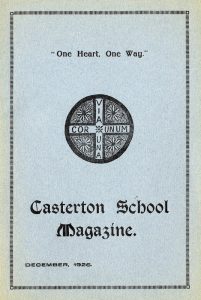The school set up a junior branch of the League of Nations Union (LNU) in 1924, jointly run by staff and pupils. Two years later they had 95 members and had organised study circles and visiting lecturers, such as Mr F. J. Hayes who spoke about the Geneva League of Nations meeting. In 1932 members attended the Kirkby Lonsdale Branch of the LNU AGM and heard Sedbergh School’s Headmaster say that social and economic benefits of the League of Nations made it ‘one of the most vital forces in history.’ The school also held an essay competition on methods of securing peace and goodwill. By 1934 membership had risen to 145, enrolment taking place on Armistice Day, when members gave talks on the different countries of the League.
This active group held a debate between pacifists and two members taking the militant view in 1935. The pacifists won, but ‘heated arguments were carried on for several days in the formroom.’ A year later, worried about the future of the League, pupils held an extra meeting to discuss the League’s failures, success and future. They decided to believe in collective security. In November 1935, staff gave both sides of the arguments in the Abyssinia Crisis. This was both topical and informative. A year later, they held a League ‘mock Assembly’ to discuss the revision of the Treaty of Versailles. In 1938, Mr Alec Wilson of the LNU described his visit to Europe and he returned in March 1939 to describe the work of the International Labour Organisation.
References/Further Reading:
Casterton School Magazine, 1926-1939. Sedbergh School Archives.


